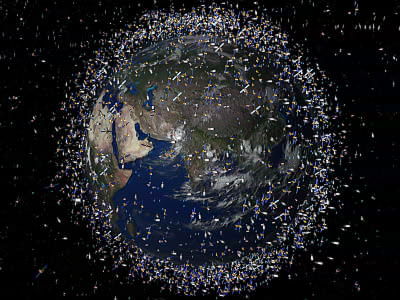It is reported that the target of the mission to remove the garbage 'space debris' drifting in space fell apart due to collision with a small object

In the satellite orbit of the earth, countless pieces of
ESA - Objects detected in the vicinity of ClearSpace-1 debris removal mission target
https://www.esa.int/Space_Safety/Objects_detected_in_the_vicinity_of_ClearSpace-1_debris_removal_mission_target

Target of EU Space Debris Removal Mission Is Itself Hit by Space Debris - Bloomberg

With the development of space development, the number of space debris, such as satellites that have completed their operation and debris generated by the separation of multi-stage rockets, is increasing. If space debris collides with active satellites, manned spacecraft, the International Space Station, etc., it is regarded as a problem that the facilities may be destroyed and the lives of the crew may be endangered.
According to NASA, the U.S. Department of Defense monitors more than 27,000 pieces of space debris in Earth's orbit, but there are millions of tiny pieces that are difficult to track with sensors in operation. I am

In response to the problem that countless space debris are obstacles to space development, ESA plans to implement a space debris removal mission called ``
In ClearSpace-1, using the robot arm mounted on the dedicated artificial satellite 'ClearSpace-1', which was launched by ESA in 2013, the Vega Flight VV02 payload adapter 'VESPA' with a diameter of about 2m was captured. , A mission to re-enter the atmosphere and incinerate will be performed. The following movie is an image video of ClearSpace-1 capturing VESPA.
Preview ClearSpace-1 Mission-YouTube
Prior to the start of the mission in 2026, ESA was monitoring VESPA. Confirmed a large number of new debris scattered nearby. The ESA later announced that 'this debris is believed to have originated from VESPA.'
According to ESA, the cause of the scattering of debris from VESPA is thought to be the result of a small untracked object hitting VESPA at very high speed. On the other hand, ESA reports that ``the increase in collision risk that the debris generated this time poses to other missions is negligible.''

In response to the scattering of VESPA fragments, ESA said, ``The scattering of this fragment emphasized the importance of the ClearSpace-1 mission. We need to reduce the potential for significant damage to active satellites.'
Related Posts:







